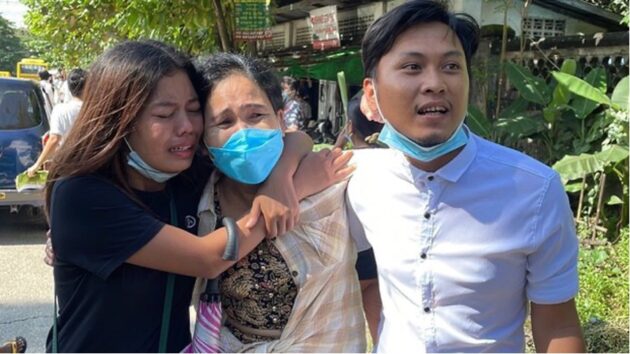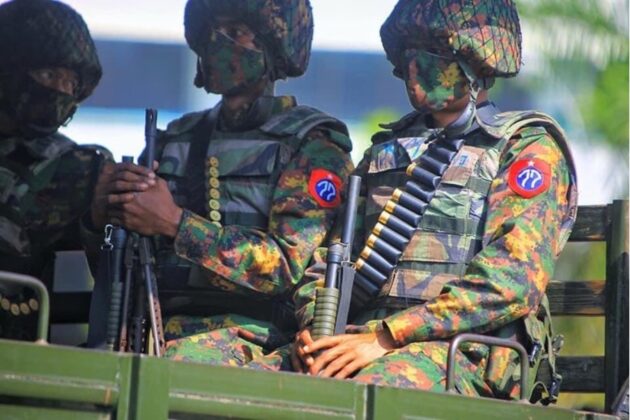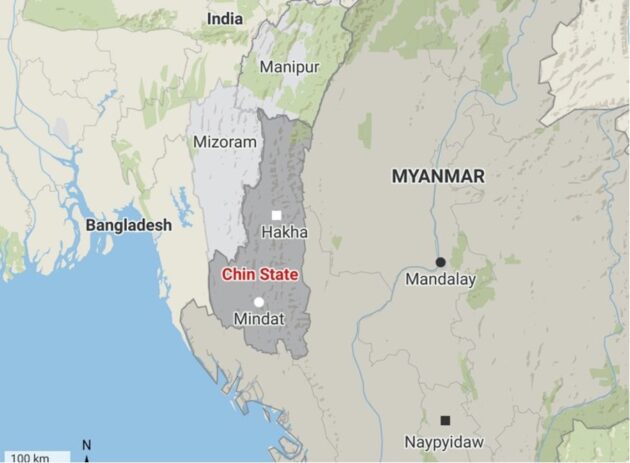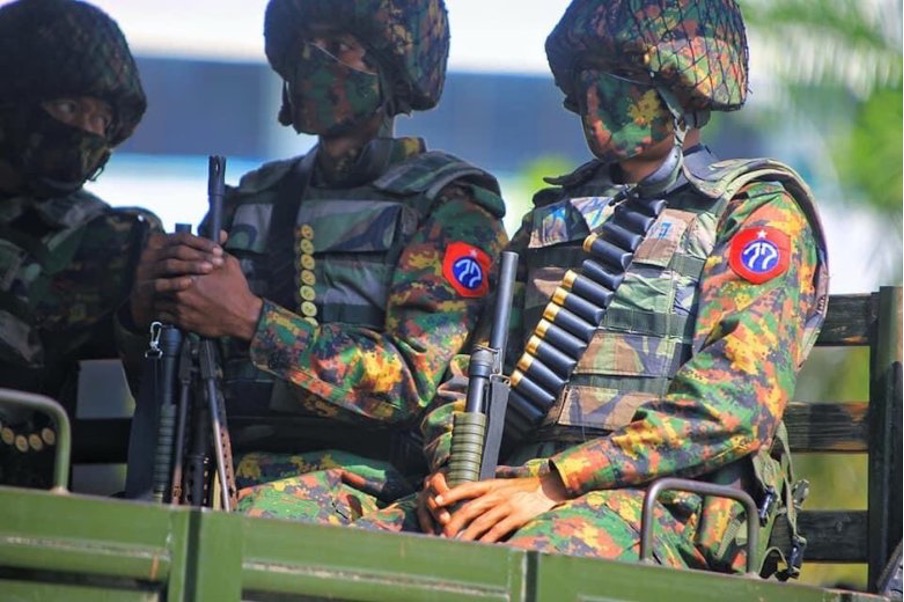22nd October 2021
Things have been happening in the background in Myanmar and developments are in the wind. The Junta has still not got control and is looking to escalate the offensive now that the monsoon season is coming to a close.
With exception of Rakhine State, PDFs across the country continue to step up operations against the regime and junta-run businesses, including Mytel telecoms masts, factories and military products.
The regime is also facing fierce attacks by ethnic armed forces, including the Kachin Independence Army, Myanmar National Democratic Alliance Army and the armed wing of the Karen National Union.
The junta’s deputy, Vice Senior General Soe Win, on Oct. 13 instructed the military to annihilate the PDFs and other guerrilla resistance groups.
Source The Irrawaddy 22nd October 2021.
This week, the junta released 5,000 prisoners, but under strict conditions. This was spoilt by them rearresting 110 the next day.

The release was probably a reaction to international criticism of its rule and an attempt to appease overseas interests. The cynical would say that it was also a precursor to military action being planned at the end of the monsoon as it would free up prison capacity for a fresh intake. The rearrest of some prisoners suggests that they were followed, and a record made of their contacts to add to intelligence about the rebels.
Khant Zin Ko, a member of the Monywa University Students’ Union, was similarly arrested after his release from Myoma Prison Camp No. 1.
A relative, who asked not to be named for fear of reprisal, said his re-arrest suggests there is a power struggle at play between prison officials and the military.
“The higher authorities are saying one thing and those on the ground are doing what they want,” they said.
Attempts by RFA to reach Deputy Minister of Information Zaw Min Tun by phone went unanswered Thursday, although earlier in the week he said that he was unaware of the details pertaining to re-arrests.
Source Radio Free Asia 21st October 2021.
The military is gearing up for a major onslaught in late October. Planning has undoubtedly been driven into higher gear following the abrupt departure of the Sagaing-based Northwestern regional commander Brigadier General Phyo Thant. Detained in early October amid rumors of disloyalty and after presiding over daily humiliations of the military by ill-armed PDF fighters, the disgraced commander reportedly remains under house arrest.
Replacing him are two more senior generals, both noted hardliners, who from Naypyidaw and Sagaing will ensure close oversight of the campaign and the performance of its field commanders.
One is Lieutenant General Than Hlaing, deputy interior minister and head of Myanmar’s increasingly militarized police force; the other, Lieutenant General Tayza Kyaw, is head of Bureau of Special Operations No 1, which coordinates operations involving regional commands across the north of the country.
Tatmadaw ‘elite’
The number of forces at the disposal of the two generals and their staff is difficult to gauge and almost certain to vary depending on tactical requirements.
But based on the number of centrally and regionally commanded formations already deployed into the western theater – historically a military backwater with virtually no insurgent activity – a reasonable estimate would suggest a build-up of some 30,000 troops from a Tatmadaw base-line infantry combat strength that is unlikely to number much more than 100,000 -120,000 men.
The accepted strength of all the armed forces is 325,000 men. This indicates that the Tatmadaw is committing 30% of its combat-ready force to the forthcoming action. This carries dangers if it does not achieve success. The probability is that they will continue to incur casualties, adding to the declining morale of the troops.

Predictably, a significant proportion of Naypyidaw’s praetorian force of ten centrally commanded Light Infantry Divisions (LIDs) will be at the sharp end of offensives. Already four divisions (or substantial elements of them) have been deployed into the western theater.
Often described in western media as “elite” units, LIDs play a role on the battlefields of Myanmar that is a long way from that of highly trained and well-equipped special forces such as Britain’s Special Air Service (SAS) or Russia’s Spetsnaz, typically associated with term “elite” in advanced militaries.
Divided into mobile Tactical Operations Commands (TOCs) of three battalions with attached artillery and access to close air support when required, LIDs are essentially assault troops, once invariably infantrymen, today increasingly mechanized. They constitute a cohesive, experienced, ruthless and, not least, unswervingly loyal army-within-an-army. Think Saddam Hussein’s Republican Guard – only “lite.”
Those qualities and the esprit de corps that goes with them set the LIDs sharply apart from line battalions commanded by the army’s Regional Military Commands (RMCs), troops whose training, discipline, and morale typically leave much to be desired. In the coming months, those liabilities will inevitably face growing strains.
None of that, however, will mitigate the Tatmadaw’s fundamental dilemma: a shortage of manpower that, once the heavy firing dies down, will impose real strains on the army’s ability to control conquered territory and permit resistance forces to recover, regroup and hit back.
This perennial conundrum of counterinsurgency typically drives two very different responses, and in western Myanmar in the coming months it is again likely that a confused mixture of both will emerge from the smoke of conflict.

Resistance forces in Myanmar’s Chin state will face the onslaught.
One reaction may see the Tatmadaw attempting to maintain a spread of forces across village tracts where in certain townships PDFs have been notably active. But the dispersal of forces required for a counterinsurgency grid dominating rural hinterlands will leave outposts and supply transport vulnerable to the sort of daily harassment using IEDs that between July and September already cost hundreds of security force casualties.
Source Asia Times 19th October 2021.
The next few weeks will be bloody and given the difficulty of communications will go unreported in the West unless the humanitarian crisis resulting from this becomes public.
Please share this article so that others can discover The BFD

